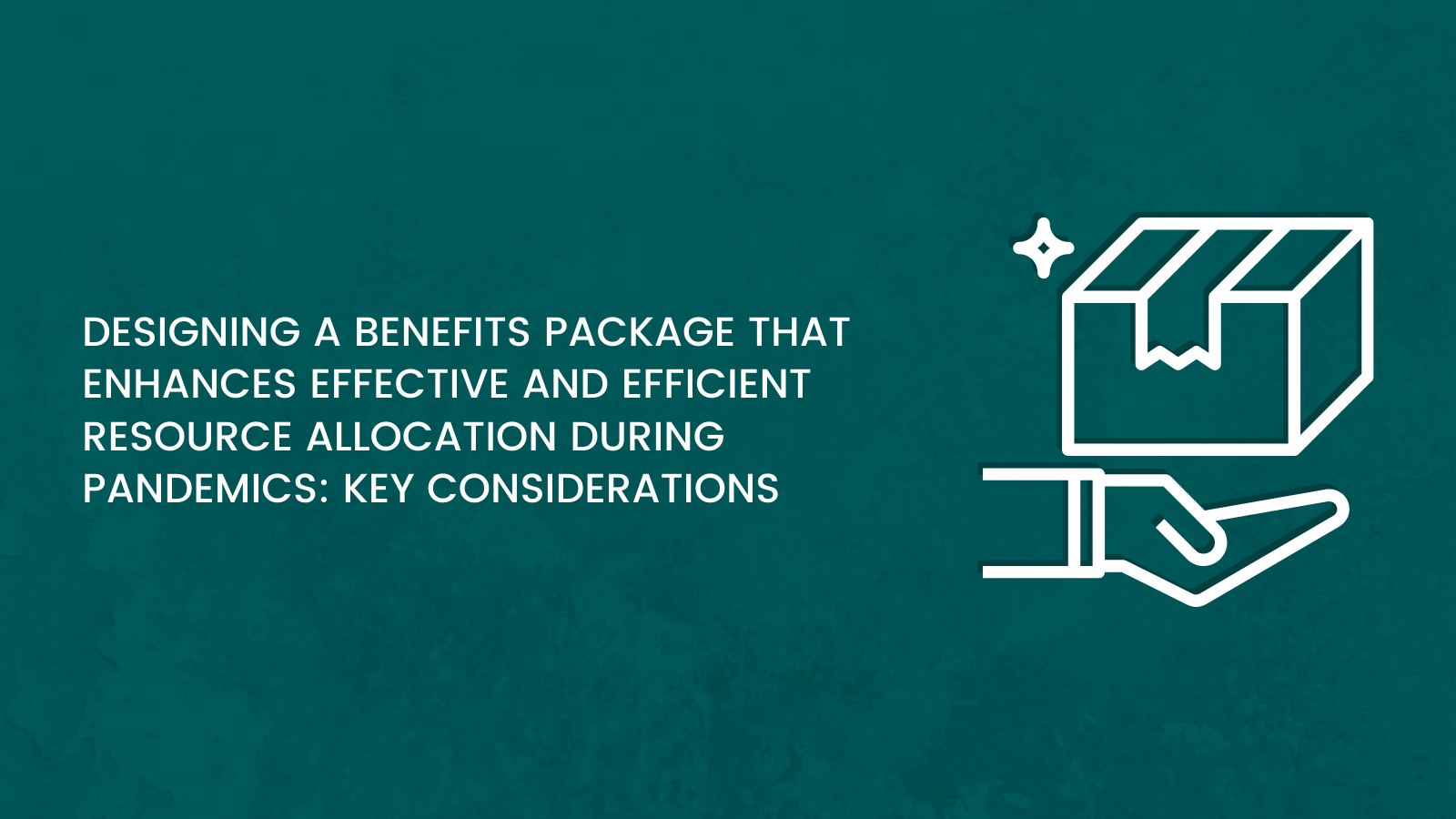Determining the benefits package- the set of services or interventions purchased is one of the three key strategic purchasing decisions. Pandemics such as COVID-19 pose a major challenge due to their unpredictability in terms of their occurrence, duration, the extent of spread, associated morbidity and mortality, and the level of economic, social, or political disruption. These factors, among others, call for designing a benefits package for pandemics that will ensure effective and efficient allocation of scarce and often unbudgeted for, borrowed, or donated resources, especially in low and middle-income countries. The following should be taken into consideration when determining what services to purchase during pandemics.
First, the Ministry of Health or the relevant health institution should spearhead setting clear goals with regards to the intended impact of the pandemic benefits package and defining the criteria to inform the inclusion and exclusion of services and possible inclusion in already existing health benefits. Common criteria considered include, disease burden, feasibility, affordability, equity and risk of catastrophic health expenditure. Countries with pre-existing healthcare priority setting criteria and an institution tasked with health benefits package development may benefit from a more speedy and systematic development and review of the benefits package with an enhanced understanding of epidemiology as pandemics evolve.
The institutionalization of a health benefits authority would also facilitate timely revision of the benefits with an enhanced understanding of the epidemiology of pandemics over time and facilitate the determination of the criteria for vaccine beneficiaries where population coverage is not feasible.
Second, the designed benefit package should be explicit in stating the actual list of pandemic related outpatient and inpatient service entitlements. Explicitness clarifies providers and beneficiaries, thus limiting under provision and facilitating standardization of care provided across both public and private sector providers. The benefit package should also be linked to existing treatment guidelines which, in the case of COVID-19 pandemic largely entails protocols for management of the COVID-19 related symptoms such as fever, cough and shortness of breath. Treatment guidelines should also be linked to approved essential medicines, supplies and equipment lists.
Third, regarding financial access to pandemic related care, government funding would be the most appropriate approach due to factors such as lack of or minimal coverage of pandemics by health insurance firms due to the associated high risk and inability to pay or exposure to catastrophic health expenditure, especially among the poor and other vulnerable groups. For example, in South Africa, COVID-19 tests are free in the public sector. In Kenya, the National Hospital Insurance Fund (NHIF), the largest public health insurer, covered COVID-19 treatment costs incurred at government health facilities. However, due to the high costs, this became unsustainable, and NHIF stopped catering for COVID-19 treatment and thus, NHIF members had to incur out of pocket payments to access COVID-19 treatment. To ensure efficient use of resources, provider payment for provision of pandemic related services should be linked to performance to incentivise positive provider behaviour such as accurate reporting and limit adverse provider behaviour such as overprovision or under-provision of services or upcoding of diagnosis.
Fourth, proper communication about the pandemic benefit package is crucial. Healthcare providers need to be sensitized about the package to ensure effective service provision. Awareness creation among the public is also key to encourage uptake of services. There should be equitable geographical coverage of information in addition to ensuring that the avenues of communication used to reach vulnerable groups such as the elderly, poor, people with disabilities and people living in rural and marginalized areas. Effective communication on the benefit package could be enhanced by using a source of information that is perceived to be credible in the public eyes such as the Ministry of Health and leveraging trusted local community leaders.
Pandemics and their course are unpredictable and thus the need for proper use of available resources, of which some are borrowed as emergency funding or obtained through donor support in low and middle income countries. Designing a benefits package for pandemics is crucial. To ensure resources are allocated to provision of needed services that will lead to maximum health gain factors such as developing some criteria for appraising services to be included in the package, stipulating any cost sharing arrangements, ensuring explicitness and effective communication of the benefit package should be taken into consideration.
Authors:
Evelyn Kabia, Jacob Kazungu, Edwine Barasa- KEMRI-Wellcome Trust Research Programme

